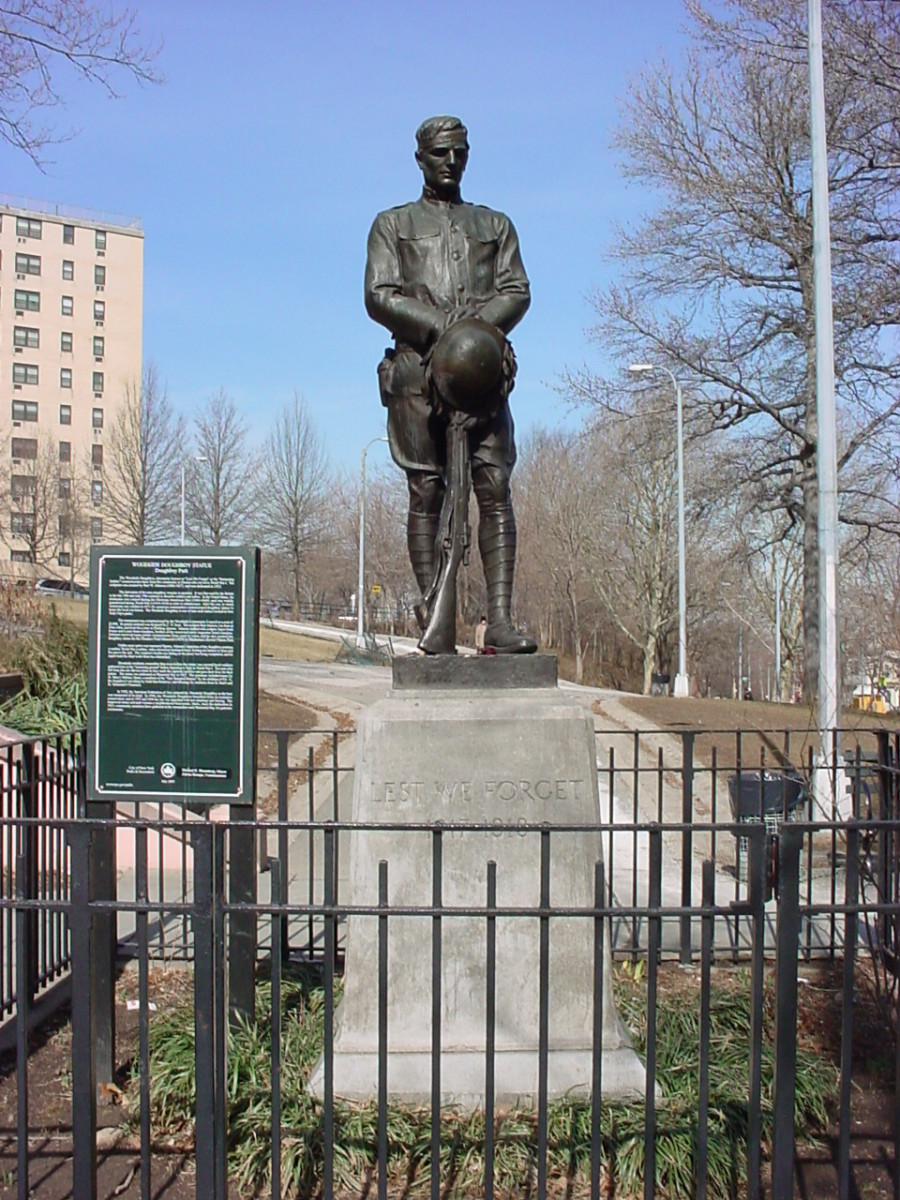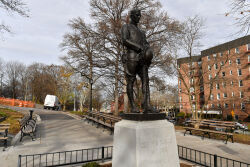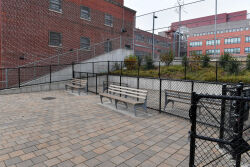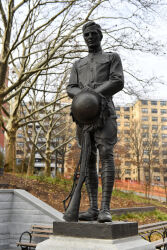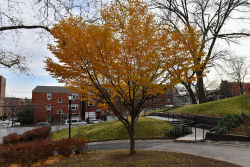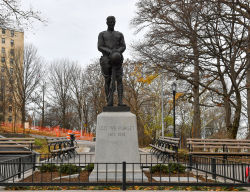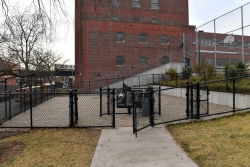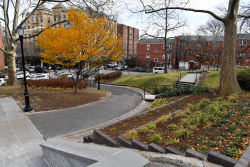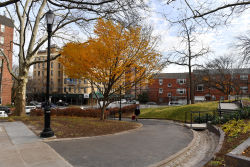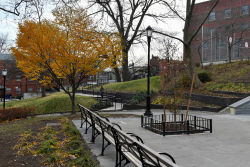Doughboy Park
View all monuments in NYC Parks, as well as temporary public art installations on our NYC Public Art Map and Guide.
Woodside Doughboy
| Artist: | Burt W. Johnson |
| Dedicated: | 1923 |
| Location: | Woodside and Roosevelt Avenues, 39 Road and 52 Street |
Artwork History
The Woodside Doughboy, alternately known as “Lest We Forget” or the “Returning Soldier,” commemorates those from this community in Queens who served in World War I. The sculpture was created by Burt W. Johnson (1890–1927), and was dedicated in 1923.
The derivation of the term doughboy remains in question. It was first used by the British in the late 18th and early 19th centuries to describe soldiers and sailors. In the United States, the nickname was coined during the Mexican-American War (1846–1848), and was widely popularized during World War I (1914–1918) to refer to infantrymen. After the war, in which Americans saw combat in 1917-18, numerous communities commissioned doughboy statues to honor the local war heroes. The Woodside Doughboy is one of nine such statues erected in New York City’s parks.
The monument was commissioned by the Woodside Community Council at a cost of $5,000. Its granite pedestal was designed by C. N. Kent. The sculptor Burt Johnson was born in Flint, Ohio, and lived for a time in Flushing, Queens. Johnson studied with sculptor James Earle Fraser and Louis Saint-Gaudens, brother of the renowned artist Augustus Saint-Gaudens. Johnson received many public commissions from coast to coast, and he also created the doughboy statue for the Flanders Field Memorial (1929) in Manhattan’s Dewitt Clinton Park.
Unlike more active war memorial figures, Johnson’s depiction of the doughboy portrays a somber World War I soldier, with a downcast bandaged head, holding his helmet in front and his gun to the side. The sculptor’s health was failing as the piece was being completed, and he supervised the final work from his wheelchair.
Woodside residents remember that even before the statue was erected local soldiers gathered here at the “mustering ground” before departing to fight in World War I. Ten men who left from this site did not return as they made the supreme sacrifice and gave their lives for their nation. The statue was dedicated on Memorial Day in 1923. The ceremony included music by St. Mary’s Military Band, a rendition of the “Star Spangled Banner” by the children of P.S. 11, the doughboy’s unveiling by Gold Star Relatives, and blessings by ministers from St. Paul’s and St. Sebastian’s Churches.
In 1928, the American Federation of Arts selected the Woodside Doughboy as the best war memorial of its kind. In 1990, the Woodside Doughboy benefited from an extensive conservation, and in 1995 and 1998 the site was upgraded with new plantings and fencing. The improved statue and park remain a neighborhood focal point, where, since the dedication in 1923, community members have gathered at the monument each Memorial Day for patriotic ceremonies.
In 1990 the beloved Woodside Doughboy received an extensive conservation treatment which included cleaning, repatinating, and treating with a protective wax coating. With the efforts of the Woodside Civic Association, in April 2007 a stone marker was placed at the foot of the Doughboy statue listing the names of the 13 servicemen from Woodside who gave their lives during World War I while serving their country.
Artwork Details
| Description: | Figure (over life-size) on pedestal |
| Architect: | C.N. Kent |
| Materials: | Bronze, granite |
| Dimensions: | Figure H: 7'2"; Pedestal H: 4'11½ W: 3'11" D: 3'11" |
| Cast: | 1923 |
Inscription
LEST WE FORGET / 1917-1918 /Please note, the NAME field includes a primary designation as well as alternate namingsoften in common or popular usage. The DEDICATED field refers to the most recent dedication, most often, butnot necessarily the original dedication date. If the monument did not have a formal dedication, the yearlisted reflects the date of installation.
For more information, please contact Art & Antiquities at (212) 360-8163.
Check out your park's Vital Signs
Clean & Safe
Green & Resilient
Empowered & Engaged Users
Share your feedback or learn more about how this park is part of a
Vital Park System
